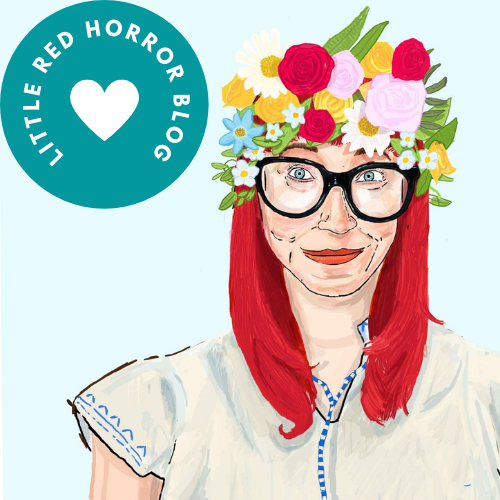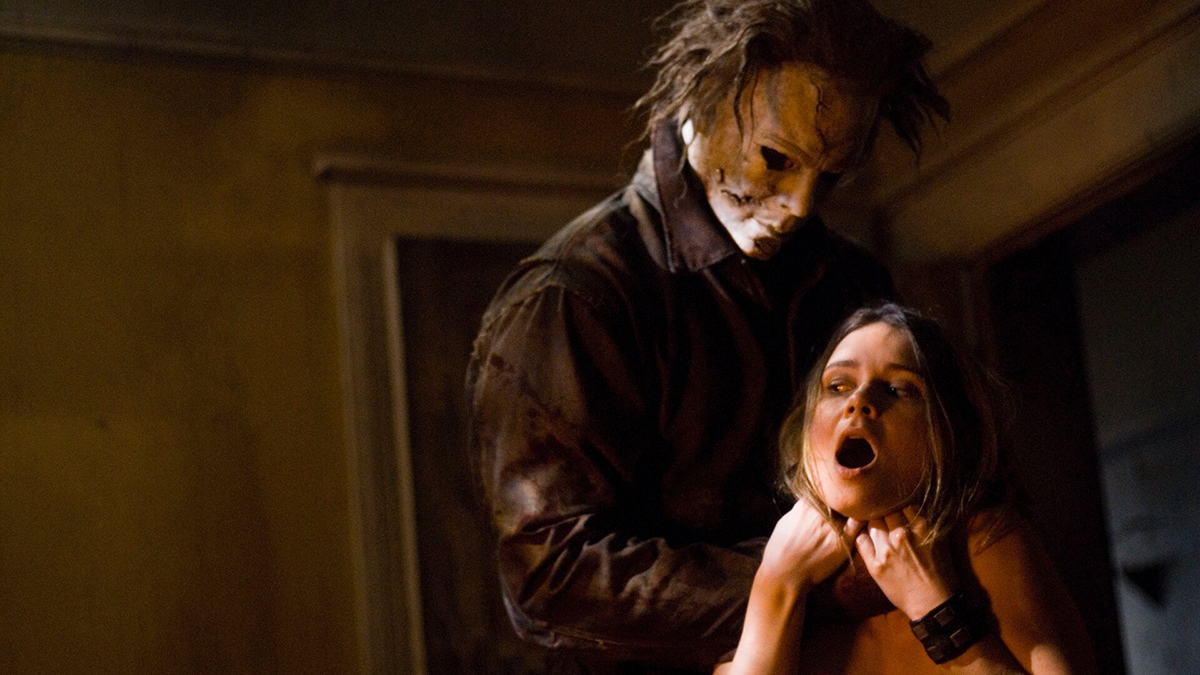Sometimes They Come Back is here to take a look at the horror genre and its love for remakes! We’ll be discussing both the original movie and its remake (sometimes multiple remakes) in detail before deciding who comes out on top! Are the originals always the best? Let’s find out!
It’s October, which means it’s Halloween season, which means I really couldn’t avoid this comparison for any longer. This month we’re looking at the classic stalk-and-slash Halloween (1978) and the questionable remake by Rob Zombie, Halloween (2007). Aside from the impressive fact that this franchise has three films in it which are just called Halloween (thanks to the 2018 direct sequel to the 1978 movie), Rob Zombie’s effort is one that often draws strong opinions from horror fans. Whether you love it or you hate it, it’s out there, and therefore I am compelled to compare it to John Carpenter’s original movie to see which one is the better film.
Halloween (1978)
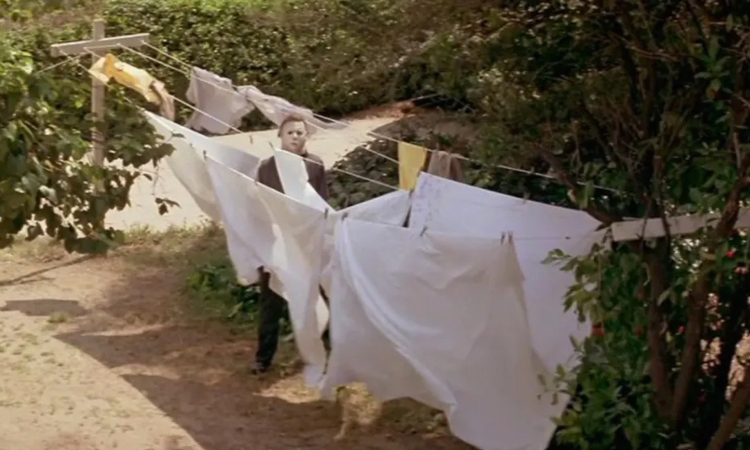
I’m going to start this section off by saying that it’s no secret that Halloween is potentially my favourite horror movie ever. I have Michael Myers draped in a sheet and wearing Bob’s glasses tattooed on my arm, so I’m pretty committed to the cause.
There’s no arguing that Halloween is one of the classic slasher movies, up there with the likes of Friday the 13th (1980), The Texas Chainsaw Massacre (1974), and A Nightmare on Elm Street (1985). When I was growing up, it felt like one of the staple horror movies you had to watch to get inducted into the horror movie fan club, even though my mum forbid me from watching it when it was on TV when I was in primary school for fears it was too scary. She was probably right.
Halloween opens with the perfect introduction to our cold and calculating killer, Michael Myers, by showing us him murdering his sister when he’s just a child. Halloween certainly doesn’t mess about, getting right to its first murder in a matter of minutes, and then hitting us with the shock that the killer is, in fact, a child. Poor Judith Myers meets her maker in a particularly gruesome fashion as she sits undressed and post-coital when Michael sneaks up behind her in a clown costume. This kill is definitely a case of your brain filling in the blanks and making it much more horrific than what’s actually seen because we don’t get to see very much. Even though the camera never leaves Judith, apart from to give us a nice closeup of the giant kitchen knife Michael is wielding, the fact that we’re viewing the scene from Michael’s point of view, and therefore through the tiny holes of a clown mask, obscures our vision from anything too gruesome. However, the sound effect of Michael stabbing his sister fills in the blanks, much like the iconic shower scene in Psycho (1960).
We cut to 15 years later, and Dr Loomis, who has been working Michael’s case since he was committed a sanitarium, is heading up to the hospital with a nurse to oversee Michael getting moved. However, when they arrive, Michael has already started his escape plan, as the grounds are full of wandering patients. Michael manages to steal the nurse’s car and flee the scene, with Dr Loomis entirely convinced that he’s heading back to Haddonfield to carry on what he started all those years ago.
Haddonfield is an idyllic American suburb, and with autumn and Halloween in full swing. The streets look quite peaceful, and our final girl, Laurie Strode, is walking to school and talking to Tommy Doyle, a kid she frequently babysits and will be looking after tonight. Her dad is an estate agent and asked her to post a set of key through the door of the old Myers’ place as people are coming to view it later. It’s here that Michael gets his first proper look at Laurie, as he lurks in his childhood home and watches her through the door. Before the whole sister angle popped up in the sequel, it seems that Laurie ends up as Michael’s main obsession simply because her dad couldn’t be bothered to run his own errands.
Halloween perhaps stands out in the slasher genre because not a lot of people actually die, and Michael spends most of the movie stalking Laurie and her friends, waiting for Halloween night to fall so he can start killing people off. Judith dies right at the beginning and then it’s the 51-minute mark before Michael pops up in the back of the car and attacks Annie, with all the time in between used to show Michael following and observing the girls, but always waiting for the perfect time to strike. We do have one off-screen death during that time, as Michael has to murder a mechanic to steal his overalls, but all we see is the aftermath as Loomis investigates the scene.
Some of the best shots and the creepiest bits of Halloween are the stalker elements and not the actual murders. Things such as Michael watching Laurie as she sits in class, following her home, hanging out in her washing, watching Annie through the kitchen door, and the glimpses of Michael that Tommy catches outside as he does things like move Annie’s body all build the tension perfectly for the final showdown between Laurie and Michael.
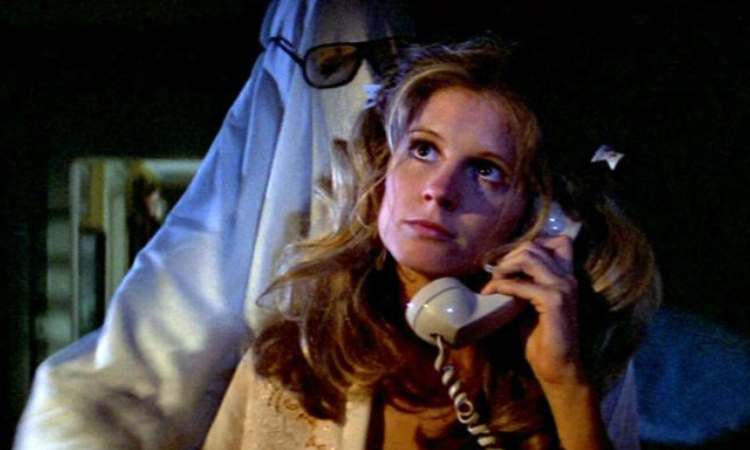
John Carpenter has frequently said that Halloween was never intended to be a morality tale, even though Laurie’s two sexually active pals are the victims while the ‘good girl’ character of Laurie manages to survive the night. Even Scream (1996) references that Laurie’s lack of boob flashing is why she’s able to outsmart the killer at the end. Whether intended or not, it’s definitely how it comes across, and seems to link back to Judith’s death which happened just after she had slept with her boyfriend, perhaps when she was supposed to be caring for Michael. Annie is killed on her way to pick up her boyfriend, and Lynda and Bob are both killed moments after they’ve had sex, with both girls in a state of undress when their murder occurs. Laurie was one of the original virginal final girls, which soon became a horror movie trope and a huge plot point in Scream. So intended or not, John Carpenter certainly added a strong horror stereotype to the genre.
Michael and Laurie’s final showdown is worth the wait, with poor Laurie utterly unaware that anything is wrong until she heads over to the house across the street to check on her friends and finds them all dead. As Laurie cries in the hallway, trying to process what she’s just seen, Michael silently appears in the doorway behind her, only visible because his white mask stands out in the darkness of the house. Michael continues his very chill and calculated approach to murder by simply sauntering after Laurie as she flees and tries to find help. She is not afraid to kick butt in her quest to escape Michael and save the kids she’s babysitting, which sees her stab him in the eye with a knitting needle and the neck with a wire hanger.
Halloween gives us hints of things the sequels slap us in the face with, such as Michael being super-human and not being able to die. It’s just the right amount of mystery without making him into a fantastical character who can never be beaten. The final shot of the empty lawn, the reactions from Loomis and Laurie, and Michael’s heavy breathing set over every nook and cranny of Haddonfield, implying he could be hiding anywhere now, is the perfect ending to make you feel on edge and that Michael could be hanging about in your clean washing when you look out the window.
Halloween (2007)
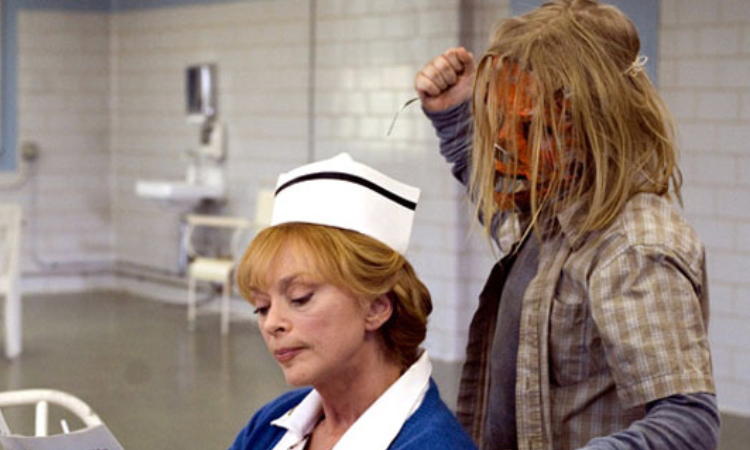
For my Rob Zombie’s Halloween viewing, I watched the director’s cut, just for full transparency and in case you are confused by any parts I mention. This was not through a desire to view a more extended version of the movie, but because it was the only DVD copy I could source. This film was intended to be half a backstory for the Michael Myers character, giving us more detail into what happened to him in the sanatorium, and half a remake of the original movie, culminating in the longest film in the entire Halloween series at 116 minutes.
The opening of Rob Zombie’s Halloween couldn’t be more different from the dark, quiet, brooding opening of the original movie as we’re introduced to this new iteration of the Myers family. Michael is upstairs, playing with his pet rats before he murders one of them as he rocks a clown mask, while his terrible family argues downstairs. We have a mother who is just doing her best and failing, and also works as a stripper, the stubborn and under-dressed older sister Judith, a step-father who is borderline abusive and sexually suggestive towards Judith, and Angel, the baby of the family, and the one Michael shares the strongest bond with.
The first person Michael murders in this version is his high school bully after he says very derogatory things about Michael’s sister and mother. Heading home on Halloween night, Michael’s mother is away to work a shift at the strip club, leaving him with his uncaring step-father, and Judith whose only plans are to have sex with her boyfriend. As it’s Halloween, Michael is cutting about in his clown costume. He murders his step-father and Judith’s boyfriend and then takes the boyfriend’s Halloween mask to wear instead. This mask is what we’ve come to expect from Michael Myers, but as Michael is currently a child, it’s about eight times too big for his head, and he looks absolutely ridiculous.
Michael is charged with multiple murders, and sent to spend the rest of his life a sanatorium, with Dr Loomis in charge of his case. We get a lot of interaction between Loomis and Michael, with Michael originally appearing quite sedate and even holding relatively normal conversations with Loomis, though he denies any involvement with the murders. Though eventually, Michael starts to withdraw into himself when he finds out his mother isn’t able to take him home and starts refusing to speak and covering his face in various homemade masks. Eventually, he murders a nurse, which leads to his mother committing suicide.
Fifteen years later, Michael is all grown up and looks like he’s been training to be a professional wrestler. After a needlessly grotesque change in the director’s cut involving two members of staff and a female patient, Michael goes on a mini murder spree and breaks free of the hospital. He eventually makes it back to Haddonfield, where he breaks into his old house and finds the mask and knife from his first murders buried under the floorboards.
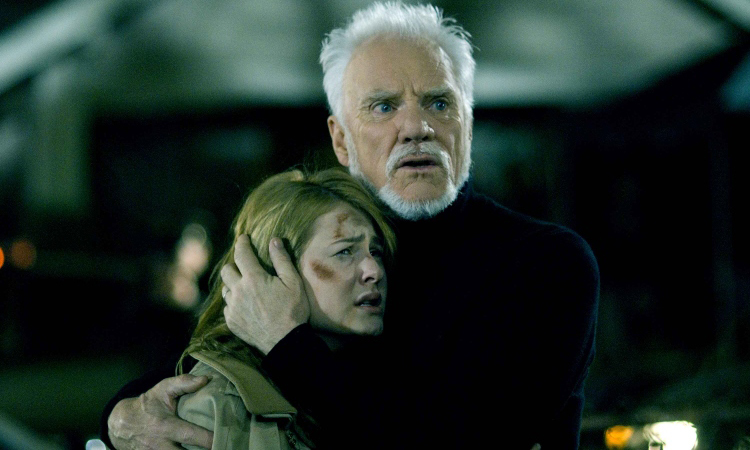
At this point, we’re fifty minutes into the movie, and it’s the first time we’re getting introduced to Laurie and her pals, who are the people we’re supposed to care about when they get murdered later. Lynda and Bob head the Myers’ house before any of the real action kicks off, because it’s their usual shagging spot, and end up meeting a grisly end. Lynda is full-frontal naked in this cut for reasons, but we do get a nice recreation of the Bob sheet ghost, so it’s a nice little homage to the original.
Laurie is revealed to be Michael’s baby sister, Angel, through a conversation between the sheriff and Loomis, as Loomis tries to convince the sheriff of the danger that has come to town. The sheriff helped cover up the fact Laurie was even related to the Myers family, which begs the question of how Michael knew who she was from sight alone, and got her adopted by a nice family in town. It’s only when the sheriff tries to phone the Strodes, and they don’t answer (because they’re already dead) that he agrees something is probably up and decides to track Laurie down.
The next chunk of the movie plays out much like the original, with Annie being attacked, though this time it’s mid-sex so her boyfriend can be brutally offed as well, and so Rob Zombie has an excuse for her character to get her boobs out. Annie manages to survive her encounter with Michael, and Michael kidnaps Laurie so he can take her to their old house, wield an old photo of them together at her, and try to get her to understand they are related right after he’s stabbed her best pal about fifty times.
The ending of this movie is bizarre as well, as Loomis rescues Laurie from Michael, and as they sit in the car in the aftermath, the pair discuss whether that was indeed the Boogeyman. This would have been an okay ending. Even Michael smashing the window in and stealing Laurie as an ending would have been acceptable. But we then get Michael crushing Loomis’ head until he seems dead and then smashing up an old house for far too long as he searches for Laurie. After a dramatic fall off a balcony, Laurie apparently shoots Michael right in the face and screams a lot as we finally get our actual ending.
Halloween (1978) vs Halloween (2007) – The Final Verdict
The Backstory
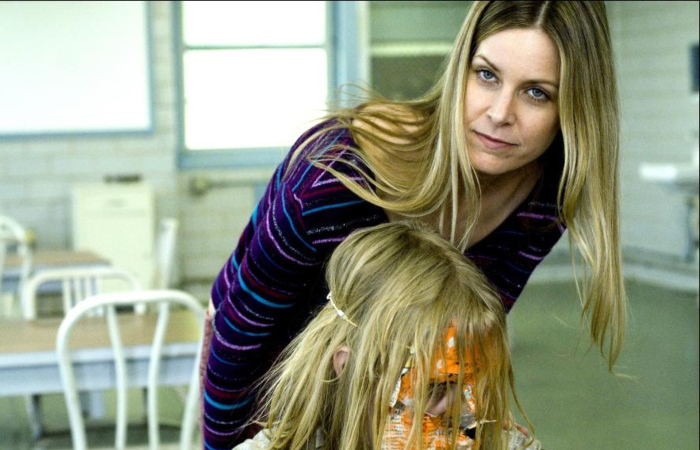
I know what Rob Zombie was trying to do by spending half the runtime of his movie focussing on Michael. By giving us a new angle to the story, it allowed us a deeper dive into Michael’s mind and the things that made him a killer. It enabled us to empathise with him and chart his progress into the monster we all know and love. It meant that Zombie had the chance to do his own thing in that first half without it really being compared to the original. However, did we need to know that much about Michael? My belief is no. The whole thing that makes Michael so terrifying is the fact that we have no idea why he suddenly decided to murder his big sister one Halloween night.
When we see the original kid Michael and the rest of his family, they seem very normal with a nice house, and that makes Michael’s murderous turn even more shocking. Zombie tries to shove it down our throat how poor and nasty his version of the Myers are, so how else was Michael supposed to turn out? From Michael’s mum having to strip to make money (because obviously women only strip when they’re desperate and never just choose it as a career path), to his lecherous step-father, and Angel’s baby mobile being made of actual trash, Zombie does everything to emphasise that this family is poor, white trash, which obviously means their offspring will be violent killers.
I also think Zombie placing so much emphasis on the mask was just a way to make Michael seem more mysterious and creepy when he didn’t need to, and probably so he could include as many weird masks as possible in Michael’s hospital room. Original Michael probably wore a mask when he returned to Haddonfield for two reasons: 1 – it would hide his face from any law enforcement who might be looking for him and 2 – it was Halloween, and a mask would help him blend in with everyone else. The inclusion of the final mask when Michael was a child was quite baffling. He already had the clown mask to work with, and the adult mask made that whole scene funny when it should have been scary.
It also spoils the Laurie sister angle pretty early on in the film, as it’s obvious the character of Angle is going to pop up again when they are older otherwise she wouldn’t be so prominent throughout the first part of the film. There’s no doubt that Zombie is going to include that plotline in his version from the minute we see Michael sparing Angel’s life after he kills everyone else in the house.
There’s also the whole mother angle, which plays more into the sequel, with Michael’s mother’s suicide seemingly being the thing that really pushes him over the edge, instead of him just being a creepy bastard who likes to stalk teenage girls for no apparent reason.
Michael Myers
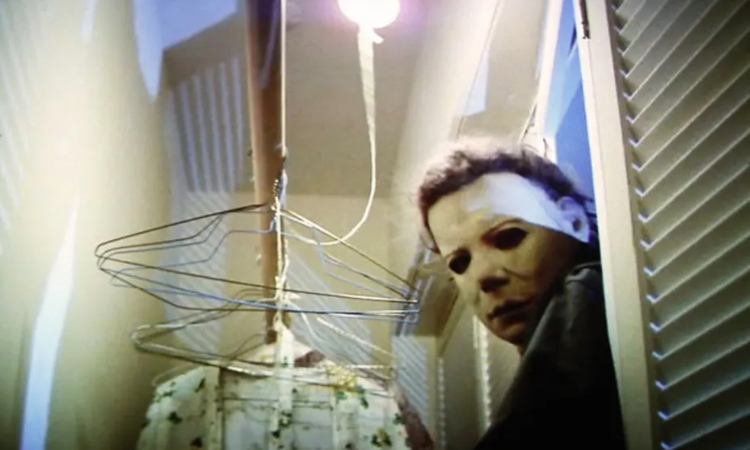
Original Michael is very logical, and he’s very patient. He sat in a hospital for years and then when he got his chance, carried on like nothing had happened in between. Also, a killer that only kills on one night of the year has got to be a patient person. His kills are also quite chilled out compared to a lot of killers in slasher movies. There’s not a lot of blood involved, Bob only gets stabbed once, and Annie and Lynda both get strangled, even though Annie does eventually get her throat slit. He’s a very low-gore killer, and I think the injuries Laurie inflicts on him are more gruesome-looking than anything Michael does to anyone else, with perhaps the exception of Judith’s death at the beginning, but that was his first murder, so obviously he didn’t know what he was doing.
Remake Michael, however, is a giant brute of a man, who looks like he would crush you as soon as look at you, and his kills reflect this. Not only is there more violence and blood involved in all of the remake’s kills, but there is also a significantly higher death count, with very few deaths taking place off-screen. Extra characters such as all the hospital staff, Annie’s boyfriend, and Laurie’s parents are all killed off so that Zombie can get as much violence on the screen as possible. Michael is not patient, controlled and calculated either. While he does stalk the characters a little, the second part of the story is so condensed that it doesn’t have the same effect as the original movie.
It’s also confusing what his intentions are with Laurie after he kidnaps her. He tries to show her the photo and make her understand the family connection, but when she fails to understand him and instead attacks him, he goes back to his violent ways. Was he simply trying to form a family bond with her again? What would have happened if she had recognised herself in the photo? Original Michael has always wanted to kill Laurie once the sister angle was established, but remake Michael loved his little sister and seemed to want to connect with her again. Maybe if that was his intentions, trying to do it next to the naked body of her murdered best friend wasn’t the best call.
Laurie Strode
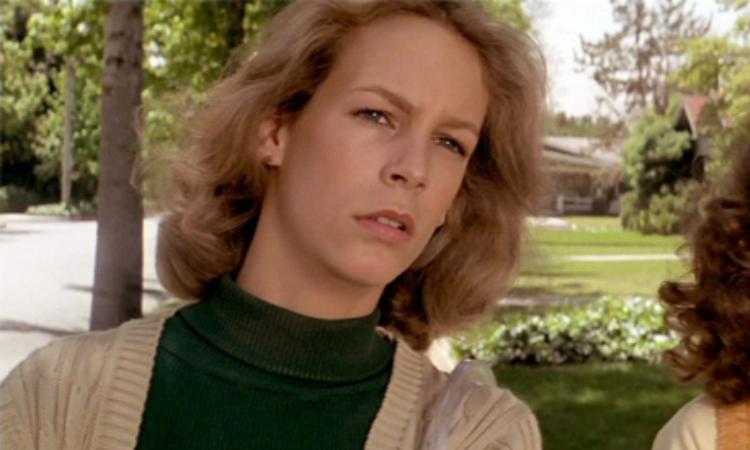
The thing I like most about the original Halloween is the fact it is Laurie’s story and not Michael’s. Once we’ve established who Michael is and the fact that he’s escaped, we switch to following Laurie and her friends and building a strong relationship with her which means we want her to survive the night. Laurie is a relatable, sweet type of person that you want to be friends with. She’s helpful to her dad, she’s kind to the kids she babysits, she worries about her homework, and she’s smart and resourceful. The whole sex = death stereotype of horror movies aside, Laurie gets to survive because she doesn’t make bad decisions. She doesn’t do things like dump her babysitting kids on other people so she can go off and have fun, or get herself stuck in a garage window in her underwear. She’s an amazing final girl, who protects the kids she’s looking after and gives Michael a great run for his money despite the situation being sprung on her with no warning.
I feel like Rob Zombie gave no real thought to what he wanted his Laurie to be. We’re introduced to her talking to her mum and fingering a bagel, and she doesn’t exactly get more likeable. They make her less sexually active than her friends, and they stick some glasses on her to try and make her look like a stereotypical good girl, and that’s about as far as it goes. She’s an awful, annoying person who is horrible to the kids she’s looking after, and I literally didn’t care whether she lived or died. This story was all about Michael Myers, with Laurie and her friends thrown in halfway through the runtime to give Michael someone to stalk and bring back the family connection, but she’s really not necessary in the grand scheme of things, which I think completely misses the point.
Who Wins?

I don’t think it’s going to come as any surprise when I say that I liked the original Halloween better than the remake. I appreciate what Zombie was trying to do by giving us half Michael’s backstory and then half a remake, but I think the whole thing would have worked better if Zombie had just given us a completely new version. Laurie’s whole story feels completely butchered, and that makes me dislike the film terribly.
Saying that, the background story for Michael that Zombie comes up with isn’t the best, and it’s cliche beyond words. Michael kills small animals, has an abusive father figure, a stripper mother, a school bully, unsupportive teachers, and a low-income family. It hits every point in the potential serial killer backstory, and it just feels like he put no real thought into it. I’m also not sure of the point of giving him a backstory trying to explain what made him the way he is because we’re never going to feel sorry for Michael Myers. Sure, it sucks that his family and then the sanatorium turned him into a terrible monster, but he murders people every chance he gets, and there’s never going to be any sympathy there.
The final nail in the coffin for me for Zombie’s version is the dialogue, which is so terrible than I can’t get past it. It’s very distracting from the story, and it’s especially terrible from Laurie and Lynda’s characters. I feel like no one who made this film has ever heard actual teenage girls have a conversation with each other. If you enjoy hearing “fuck” every second word, and such lovely phrases as “pump the cum out of her stomach”, then you might get on better with this film than I did.
The only good decision Rob Zombie made in this entire process was keeping the original Halloween score.
Winner: Halloween (1978)

Why not check out more editions of Sometimes They Come Back here!
